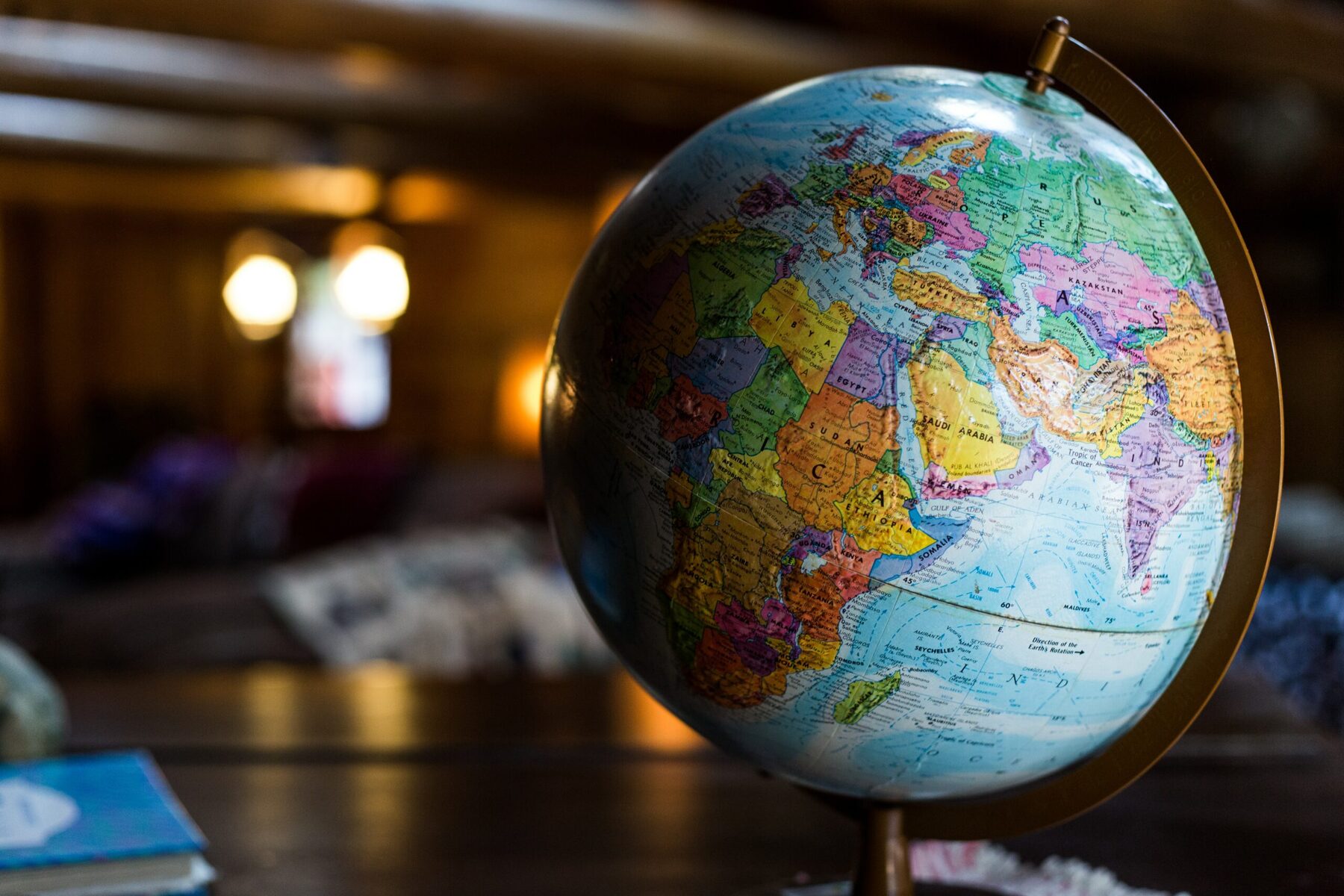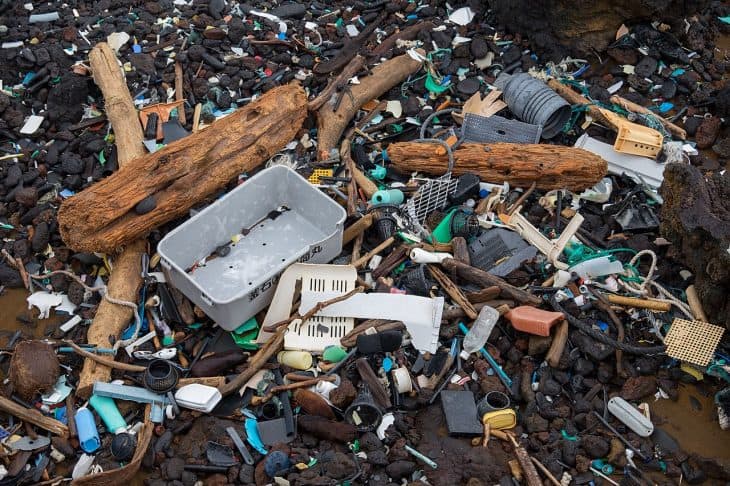
As wide and deep as the Pacific Ocean goes, there are still things hidden in its waters. Unfortunately, one of them is the world famous trash island in the ocean, mainly caused by human activity. Dive into one of the biggest signs of ocean pollution with these Grate Pacific Garbage Patch facts.
- The Great Pacific Garbage Patch was discovered in 1997.
- It is composed of an estimated 3.6 trillion pieces of plastic.
- The GPGP continues to expand.
- The GPGP estimated covers a surface area of 1.6 million sq km or twice the size of Texas.
- Approximately 1.15 to 2.41 million tonnes of plastic trash enters the ocean from rivers.
- An alternative name for the Great Pacific Garbage Patch is ‘Pacific Trash Vortex.’
- The GPGP consists of a soupy collection of mostly plastic marine debris.
- “Patch” misleads people to believe that the GPGP is a trash island.
- Ocean debris mainly sticks in the central area where it is very calm.
- Trash like plastic items usually lives up to 1,000 years in landfills.
- Over half of the plastic in the ocean is less dense than the water, thus, floating until it reaches the sea.
- Marine creatures suffer from failing to identify plastic particles from food so they end up eating plastic waste.
- As plastic is indigestible, it takes up space in the stomach of animals, eventually killing them.
- This endocrine system failure leads to hormonal imbalance, later affecting their whole life cycle.
- Organizations like The Ocean Cleanup are working on getting the oceans rid of plastics.
- Ships caught in storms often lose cargo to the oceans which later adds to the ocean trash.
- A storm in 1990 made Nike lose 5 shipping containers to the Pacific.
- In 1992, a ship lost bathtub toys like rubber duckies in the Pacific.
- Another storm hit a ship that lost 34,000 pieces of hockey gear.
- A 2001 study revealed that every square kilometer of the ocean contains 337,721 plastic pieces.
Charles Moore, a racing boat captain, discovered the Great Pacific Garbage Patch.
Back in 1997, Charles Moore had just competed in the biennial Transpacific Race, sailing from Hawaii to California. While crossing the North Pacific Subtropical Gyre, the captain and his crew found millions of pieces of plastic around their ship. This was eventually known to be the Great Pacific Garbage Patch.
The Great Pacific Garbage Patch is located in the North Pacific Ocean.
Also known as the Pacific Trash Vortex, this collection of marine debris covers the waters from the West Coast of North America to Japan. Forming the GPGP is the Western Garbage Patch (near Japan) and the Eastern Garbage Patch (between Hawaii and California).
The North Pacific Subtropical Gyre surrounds the Great Pacific Garbage Patch.
A gyre refers to a current system in the ocean moving in a circular pattern. In the case of the Pacific Trash Vortex, the North Pacific Subtropical Gyre is the one encompassing it.
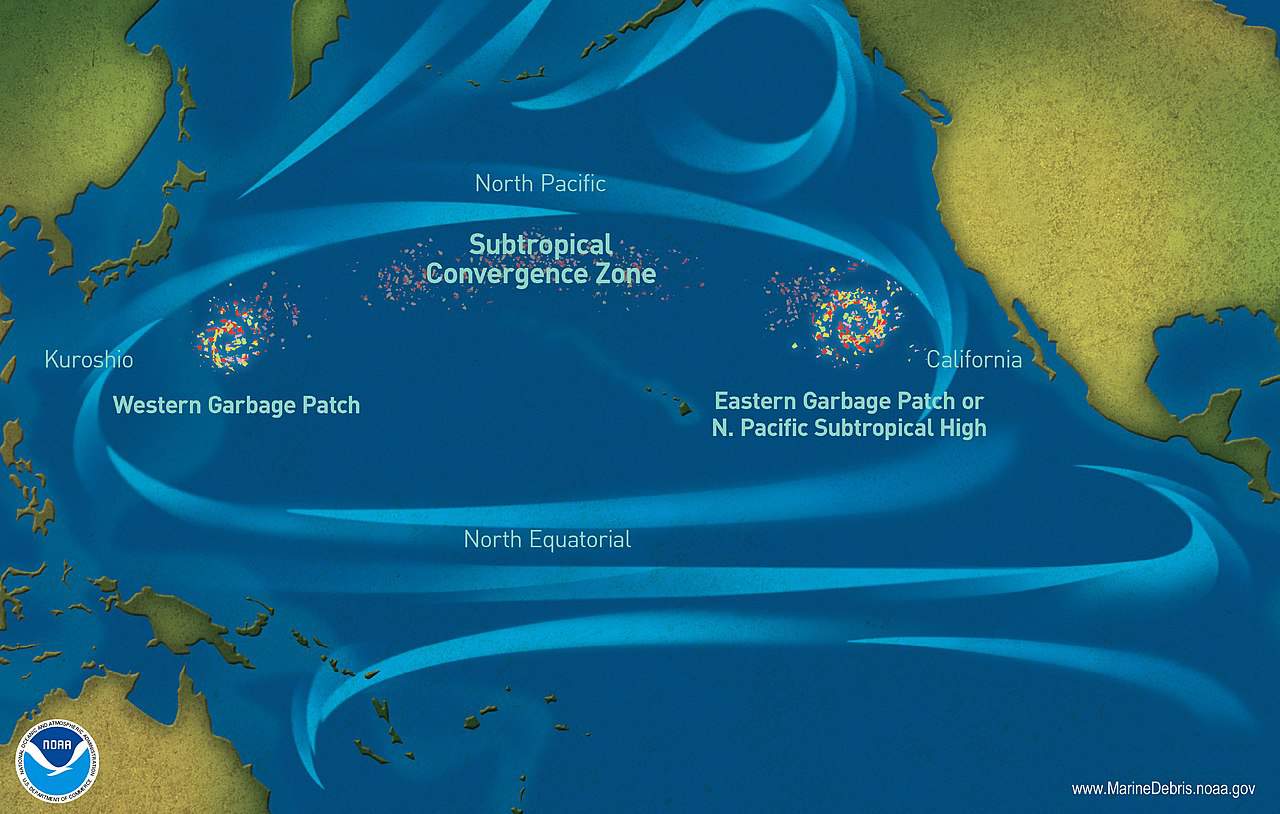
4 currents make up the North Pacific Subtropical Gyre.
Wind patterns and the Earth’s rotation form the whole circular current system. For this gyre, the currents that form it are the California current, Kuroshiro current, North Equatorial current, and the North Pacific current.
These 4 currents move in a clockwise direction.
This circulatory motion draws in debris from around the ocean, forming the Great Pacific Garbage Patch. Moreover, this current system consists of a total area of 20 million sq km or 7.7 million sq mi.
The Great Pacific Garbage Patch is formed by garbage from outside the circular current system.
When the system slowly sucks the debris in, it pushes it right in the calm central area, forming the “circle” of marine debris.
The accumulation of the marine debris caused the now Great Pacific Garbage Patch.
Most of them are non-biodegradable like many plastics. As they do not wear down, this ocean trash simply breaks into tinier microplastics over time.
The trash from the Great Pacific Garbage Patch comes from North America and Asia.
Land-based activities from these regions bring around 54% of the debris found in the GPGP. Around 20% of debris comes from offshore oil rigs, boaters, and large cargo ships that either dump or lose cargo into the water. Unusual items like LEGOs and computer monitors are just some of the items that shipping containers have dropped.
Plastics are the majority of the debris in the Great Pacific Garbage Patch.
There are two main reasons why different types of trash enter the ocean and become a major contributor to ocean pollution. First, the durability, low cost, and malleability of plastic makes it an ideal material for more consumer and industrial products. Second, plastic goods are non-biodegradable which means they do not break and just break down into smaller pieces instead.
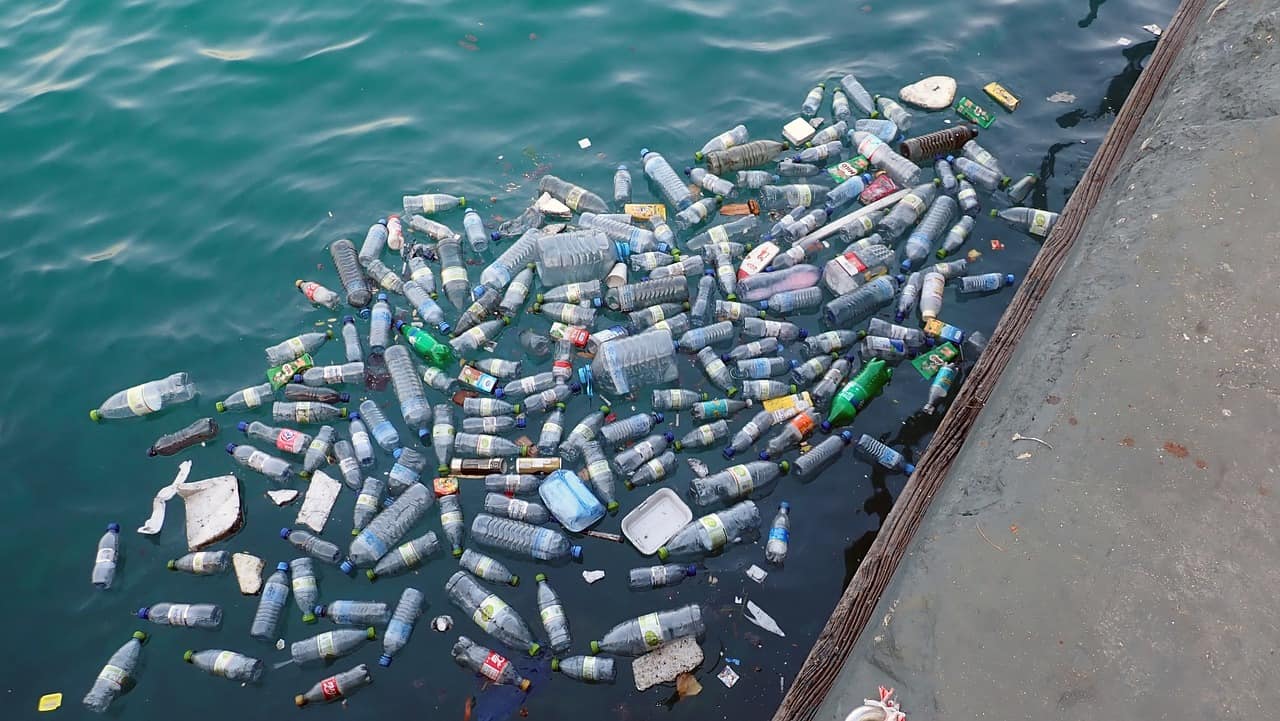
Scientists find the Great Pacific Garbage Patch too large to scour.
What makes it more difficult is that not all of the ocean trash floats on the surface. Much denser debris can sink beneath the surface, further making the area of the Pacific Trash Vortex almost impossible to measure.
This misconstrued garbage island is not the only marine trash vortex.
Newsflash: it is just the biggest of the numerous garbage islands out there. There are also trash vortexes in the Atlantic and Indian Oceans. Moreover, shipping routes in smaller bodies of water like the North Sea are generating garbage patches as well.
When Moore returned a year after his discovery, he found that the GPGP had grown.
Not just in area, but also in density. Hence, the racing boat captain began writing articles and making speeches, changing the mission of his research foundation in Algalita. Moore originally founded it in 1994 to improve the California coast water quality.
Algalita refocused on studying and raising awareness of the problem.
It addresses the plastic problem in the oceans, particularly the Great Pacific Garbage Patch. In the Los Angeles Times, a series of 2006 articles about the GPGP earned a Pulitzer Prize and succeeded in raising general awareness of the problem.
The Great Pacific Garbage Patch constantly changes in shape and location.
Winds and currents have seasonal and interannual variabilities that cause these instances. Meanwhile, floating objects are more likely to remain within the patch if the motion comes from currents and not from winds.
Scientists can now predict the Great Pacific Garbage Patch's location.
Hence, researchers can now demonstrate significant seasonal and interannual variations. The patch orbits on an average of 32°N and 145°W. Still, seasonal west-east shifts and substantial north-south latitude variations occur depending on the year.
There are 5 gyres in the ocean.
The Indian Ocean has 1, while the Atlantic Ocean and the Pacific Ocean has 2 each. Moreover, each gyre has varying sizes of garbage patches.
No nation takes responsibility for the Great Pacific Garbage Patch.
Fortunately and unfortunately at the same time, the GPGP is too far from the coastline of any country. Discoverer Charles Moore even said that any country that would try to clean up the GPGP would go bankrupt.
Cleaning up marine debris is easier said than done.
Because microplastics can be as small as tiny sea animals, nets designed to scoop them up would end up catching the poor creatures as well. The size of the oceans is another thing to consider as it makes this job too time-consuming. As per the estimate from the National Oceanic and Atmospheric Administration’s Marine Debris Program, it would take 67 ships a year to clean up <1% of the North Pacific Ocean.
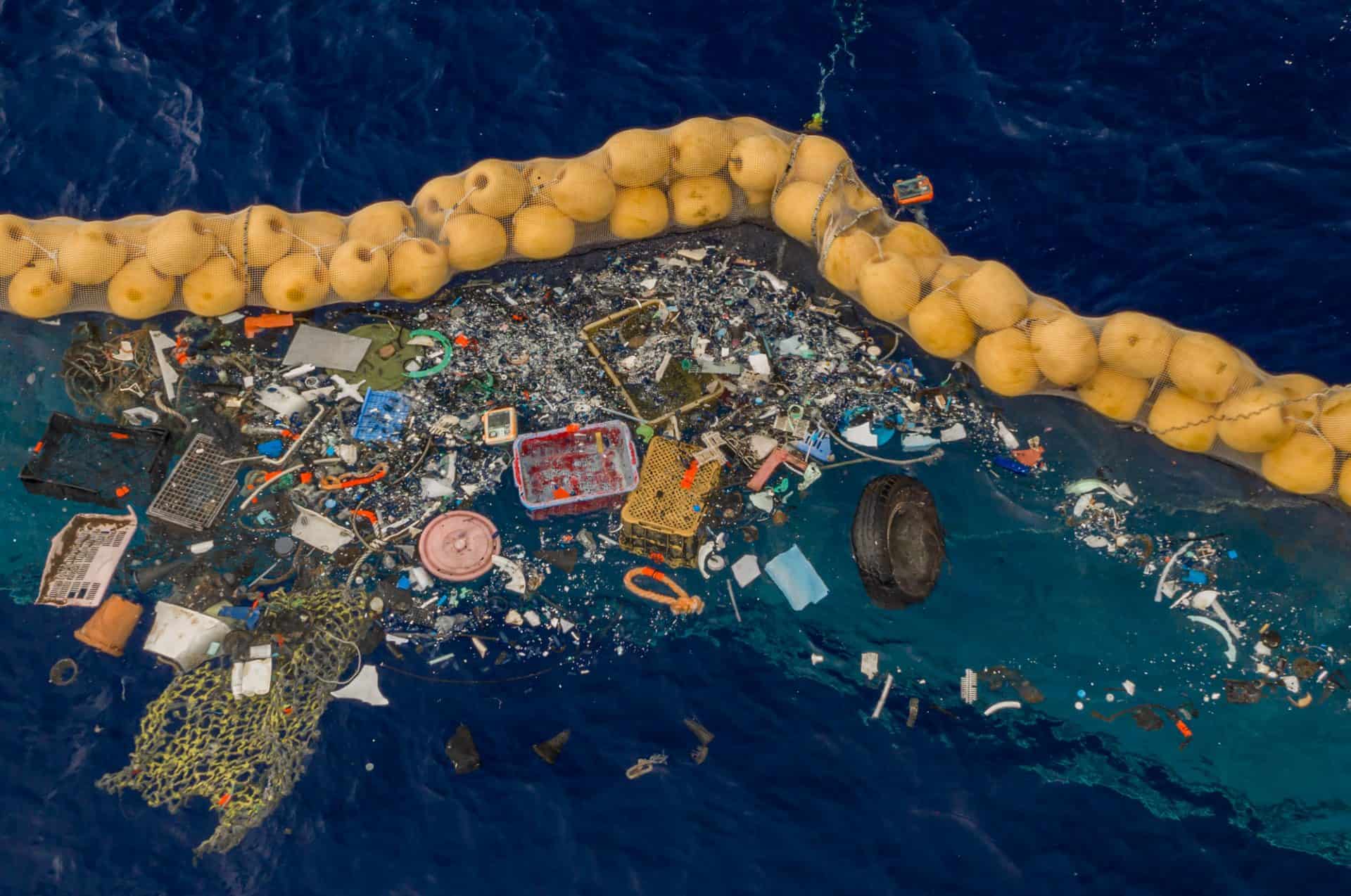
The "garbage patch" is not really a trash island.
However, the real-life GPGP consists mainly of tiny plastic bits known as microplastics. These items can’t always be seen by the naked eye.
The Great Pacific Garbage Patch does not even appear in satellite imagery.
Instead, the microplastics make the water in the GPGP look like a cloudy soup. Intermixing into the soup are larger items like fishing gear and shoes.
Marine debris refers to the litter that ends up in bodies of water.
Underneath the Great Pacific Garbage Patch, the seafloor can also be a trash heap. A recent discovery of oceanographers and ecologists revealed that around 70% of marine debris sinks to the ocean floor.
Fishing gear is not simple ocean trash.
Whether these items get abandoned or discarded, they pose a major problem. These items can damage property and entangle, injure, maim, or even drown marine wildlife.
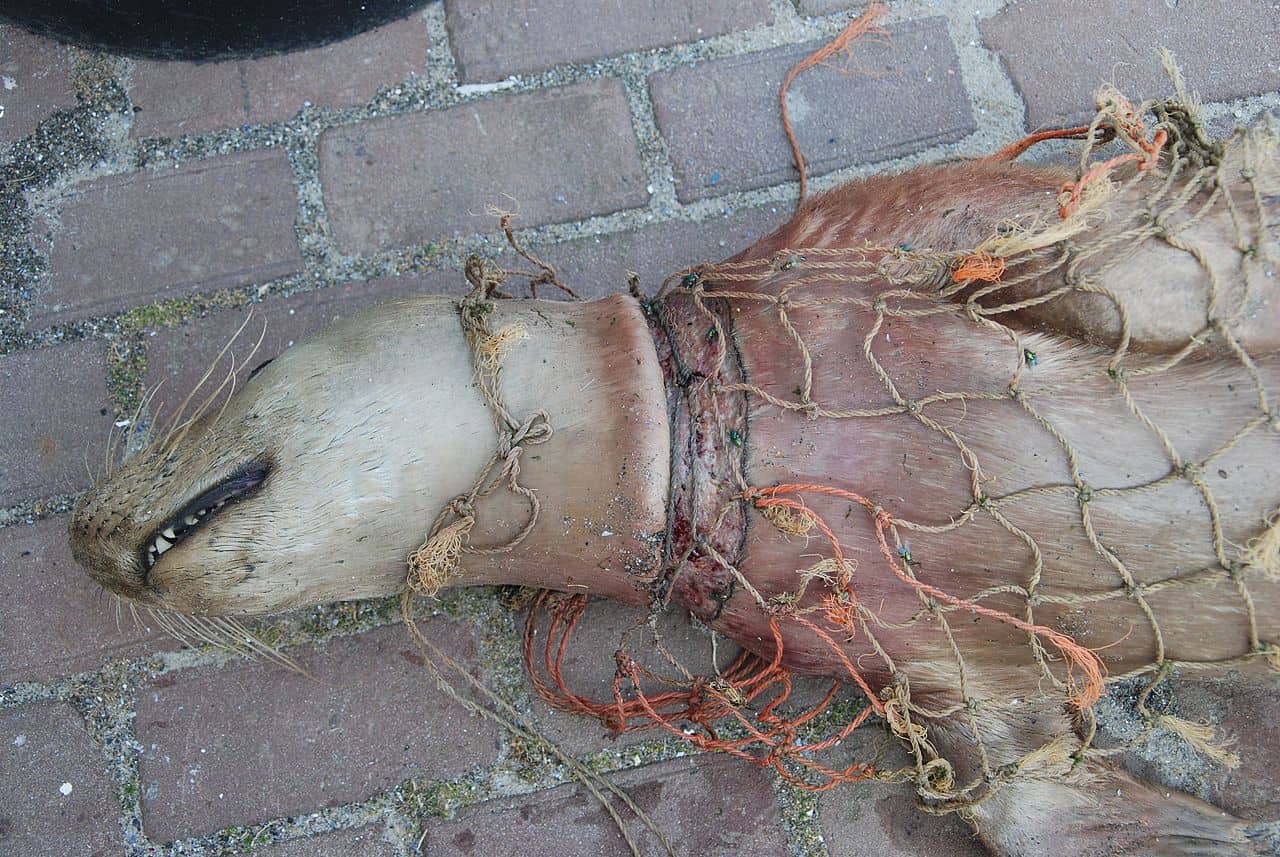
The biggest source of ocean pollution is nonpoint source pollution.
Resulting from runoff, this source includes the likes of cars, boats, septic tanks, and trucks. Larger sources include farms, livestock, ranches, and timber harvest areas.
Another ocean pollution source is the point source pollution.
Examples of this source are the chemical and oil spill, and faulty or damaged factory discharge, and water treatment systems. While these events occur less often, the events have considerably large impacts.
Plastic debris on or near the water surface is another problem.
They end up blocking essential sunlight from reaching below. Further, it denies algae and planktons of essential sunlight, making them unable to use carbon, oxygen, and sunlight to produce their own food.
Sunlight barred by marine debris affects more than one community.
For one, algae and planktons serve as food sources for smaller marine creatures such as fish and turtles. Hence, their demise will adversely affect the ecology of the said marine creatures.
Plastic can also directly enter the food chain.
When these materials break down into tiny pieces, marine animals would find it difficult to distinguish them from their food.
Sea turtles and black-footed albatross directly suffer from marine debris.
Adults of the species find food for their young. However, there are times where they end up picking ocean trash instead of food. Sadly, it leads to high fatality numbers in these populations.

The decline in the population of fish and turtles would later affect apex predators.
For instance, shark and tuna will have less food to consume. It will only be a matter of time for their population to gradually decline as well.
Humans will also experience this when seafood becomes scarce in the near future.
As humans are also part of the food chain, they are not an exception to this domino effect. Sooner or later, the increased shortage of seafood will make produce more and more expensive and inaccessible. The worst part is that the food chain is just one of the problems that the Great Pacific Garbage Patch causes and will cause in the future.
Was this page helpful?
Our commitment to delivering trustworthy and engaging content is at the heart of what we do. Each fact on our site is contributed by real users like you, bringing a wealth of diverse insights and information. To ensure the highest standards of accuracy and reliability, our dedicated editors meticulously review each submission. This process guarantees that the facts we share are not only fascinating but also credible. Trust in our commitment to quality and authenticity as you explore and learn with us.


